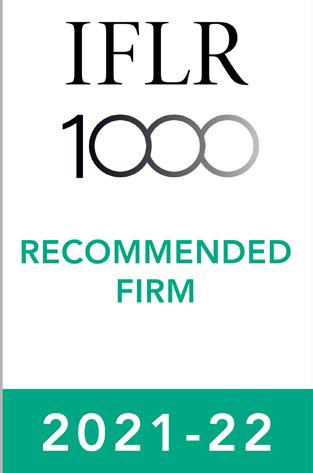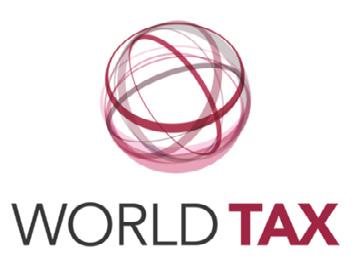& Takeovers

OVERVIEW OF Schemes
IN NEW ZEALAND
1.0 Introduction
This publication provides a brief overview of the principal sources of regulation of control transactions in New Zealand, and a summary of the key differences between undertaking a control transaction by way of a takeover offer and a scheme of arrangement. It is based on the law as of June 2023.
For a more comprehensive guide, including general advice on preparing for, or responding to, takeovers or schemes in New Zealand please refer to Bell Gully’s Guide to Schemes & Takeovers in New Zealand.
Control transactions
The two primary ways of undertaking a takeover in New Zealand are:
▶ a scheme of arrangement under Part 15 of the New Zealand Companies Act 1993 (referred to in this Overview as a scheme); and
▶ a full or partial takeover offer under the New Zealand Takeovers Code (referred to in this Overview as a takeover offer).
2.0 Legislative framework
Takeover offers: Takeovers Code and Takeovers Act
The New Zealand Takeovers Code (the Takeovers Code or the Code) is the principal source of regulation of takeover offers in New Zealand. The Takeovers Code applies to “code companies”. A code company is a New Zealand incorporated company that either:
▶ has voting securities quoted on the NZX; or
▶ has:
▷ 50 or more shareholders and 50 or more share parcels; and
▷ at least NZ$30 million of assets and/or annual revenue of at least NZ$15 million (based on its most recently completed accounting period).
The Code does not apply to NZX-listed entities that are not companies (such as listed managed investment schemes or unit trusts) or which only have listed securities that do not confer voting rights, e.g., debt securities. It seeks to ensure that shareholders are treated equally and, after appropriate disclosure, are able to make informed decisions on whether to accept or reject a takeover offer for a code company.
The Code prohibits a person becoming the holder or controller of more than 20% of the voting rights in a code company, or increasing a holding of 20% or more of the voting rights in a code company, other than through a takeover offer, a scheme or another permitted transaction.
The most commonly used exceptions to the 20% rule are acquisitions under schemes or full or partial takeover offers under the Code.
The Takeovers Panel administers the Takeovers Code and has enforcement powers under the Takeovers Act. Under a takeover offer, a bidder makes an offmarket offer to all shareholders of the target company. A full offer is an offer for all of the equity securities in the target company. A partial offer is an offer for a specified percentage of each class of voting securities. Takeover offers may be “friendly” or “hostile”.
Schemes: Companies Act and Takeovers Code
A scheme of arrangement is a statutory courtapproved procedure that allows the reorganisation of the share capital of a company. Schemes are effected under the Companies Act 1993 (the Companies Act), not the Takeovers Code.
Schemes may be used to effect a wide range of corporate restructures, including transfers of all (or a specified proportion) of each shareholder’s securities to a bidder, cancellations of existing securities and issues of new securities to a bidder.
As such, schemes can be used as an alternative to a takeover offer to effect a change of control or merger of companies. The Companies Act provides that a transaction involving a code company undertaken by way of a scheme of arrangement will not breach the Takeovers Code.
A scheme has an “all or nothing” outcome, and, typically, guarantees the bidder 100% control once the scheme becomes effective. For a scheme to be effective, it needs to be approved by target shareholders by both of the following:
▶ 75% of the votes cast by shareholders in each interest class entitled to vote and voting.
▶ A simple majority of the votes of shareholders entitled to vote (i.e., more than half of the votes attached to all shares on issue, whether they are voted or not).
2
OVERVIEW
In addition, the court has a general discretion whether or not to approve a scheme. However, the court may not order a scheme to become effective, unless:
▶ the code company’s shareholders have approved the scheme in accordance with the shareholder voting requirements discussed above; and
▶ either:
▷ the Takeovers Panel has issued a “no-objection statement” indicating that the Takeovers Panel has no objection to the court approving the scheme; or
▷ the target has satisfied the court that its shareholders will not be adversely affected by the transaction being undertaken by scheme rather than by takeover offer under the Takeovers Code.
Overseas Investment Act and Overseas Investment Regulations
Generally, approval under the Overseas Investment Act 2005 must be obtained before an “overseas person” acquires an interest in a New Zealand company:
▶ which is in excess of 25% of the shares in that company (or, where an interest of 25% or more is already held, which increases that interest to, or above, 50%, 75% or 100%, depending on the interest already held) and:
▷ the value of, or consideration to be paid for, the interest exceeds NZ$100 million, or the value of the gross assets of the target and its 25% or more subsidiaries exceeds NZ$100 million; or
▷ the target owns or has an interest in certain categories of land (“sensitive land”), regardless of whether the NZ$100 million threshold is exceeded; or
▶ for a transaction involving “sensitive land”, if the acquisition of that interest causes the target to itself become an “overseas person”.
Where consent is required, an additional “national interest” test may apply if the acquirer is a foreign government investor, the target is “strategically important”, or the Minister of Finance determines that there is a national interest element to the proposed transaction.
Bidders that are “Australian non-Government investors” have the benefit of an increased significant business assets threshold, which is currently NZ$586 million.1
Countries that have ratified the Comprehensive and Progressive Agreement for Trans-Pacific Partnership, or various other relevant international agreements to which New Zealand is a party, also have the benefit of an increased significant business assets threshold of NZ$200 million.
The increased thresholds do not apply to investments in sensitive land.
Commerce Act
Section 47 of the Commerce Act 1986 (the Commerce Act) prohibits a person from acquiring the assets of a business or shares in a company if the acquisition would have, or would be likely to have, the effect of substantially lessening competition in a market.
The New Zealand Commerce Commission administers and enforces the Commerce Act.
A person can seek either a clearance or an authorisation from the Commerce Commission to proceed with a transaction that would otherwise breach section 47.
The Commerce Commission will grant:
▶ a clearance if it is satisfied that an acquisition will not result in a substantial lessening of competition in a market; or
▶ an authorisation if it is satisfied that there are sufficient economic public benefits to outweigh any detriment from the lessening of competition in a market.
Where a merger raises competition concerns, it is possible for a bidder to provide an undertaking to sell certain assets or shares as a condition of clearance.
Financial Markets Conduct Act — Insider trading
If a bidder is granted access to material non-public information of a listed target during due diligence in connection with a scheme or takeover offer, the bidder and its advisers are likely to be “information insiders” and will need to be careful not to breach New Zealand’s insider trading law under the Financial Markets Conduct Act 2013 (FMC Act).
investor is an
3
1 Effective 1 January 2024, the significant business assets threshold for Australian investors will increase to NZ$618 million, if the
Australian non-government investor; and NZ$129 million, if the investor is an Australian government investor.
OVERVIEW
The FMC Act imposes liability on “information insiders” who:
▶ trade in quoted financial products;
▶ tip others to trade in or hold quoted financial products; or
▶ disclose “inside information” to another person who will or is likely to trade in quoted financial products or tip others to trade in or hold such quoted financial products.
There are certain exceptions to the prohibitions under the insider trading regime that are relevant in the context of control transactions.
The FMC Act — Substantial product holder disclosure
The FMC Act requires disclosure by persons with “substantial holdings” in listed issuers, thereby ensuring that the market is aware who holds such interests and of any changes to those interests.
A person has a substantial holding if the person has a “relevant interest” in quoted voting products that comprise 5% or more of a class of quoted voting products of the listed issuer. Under the FMC Act, such a person is called a “substantial product holder”.
A substantial product holder must give further notice of any subsequent changes of 1% or more in the voting securities held, and give notice on ceasing to be a substantial holder.
Listing Rules
If a bidder or target is listed on the NZX Main Board and/or another stock exchange, the NZX Listing Rules and/or the rules of that other exchange will be relevant, including in relation to bidder shareholder approval thresholds and target shareholders’ meetings where a scheme of arrangement is the transaction structure used.
A target that is listed on the NZX is generally required to disclose all material information to its shareholders under its continuous disclosure obligations. However, the NZX Listing Rules contain various exceptions from the requirement to disclose material information, including, most relevantly in the context of a potential control transaction, where the information concerns an incomplete proposal or negotiation and the information is and remains confidential.
A bidder under a takeover offer should also be aware that if it obtains a relevant interest in 10% or more of a class of NZX quoted equity securities of a target, it will become a “related party” of the target. That status will have implications for the bidder under the NZX Listing Rules.
Misleading and deceptive conduct — Takeovers Code and FMC Act
Rule 64 of the Takeovers Code prohibits misleading and deceptive conduct in takeover offers and applies to any person, including bidder entities, target companies, shareholders and their respective directors and affiliated persons.
Rule 64 of the Takeovers Code does not apply to schemes. Accordingly, during the course of a scheme, misleading or deceptive conduct will be regulated by the fair dealing provisions under the FMC Act rather than under the Takeovers Code.
4
OVERVIEW
3.0 Methods of acquiring or increasing control
Scheme of Arrangement
A bidder typically acquires 100% of a target through a court-approved scheme of arrangement approved by the target’s shareholders at a shareholders meeting. The target must commission an independent adviser’s report on the merits of the proposed transaction.
A person who becomes the holder or controller of 90% or more of the voting rights in a code company (such person being a “dominant owner”) may compulsorily acquire the remaining shares in the target and must offer to do so.
Compulsory acquisition
A bidder makes an off-market offer to the target’s shareholders to acquire all the voting securities of the target, with a condition that the 90% compulsory acquisition threshold is achieved (which condition may be waived by the bidder as long as a minimum 50% threshold is achieved). The target must commission an independent adviser’s report on the merits of the proposed transaction.
A bidder makes an off-market offer to target shareholders to acquire or control a certain percentage of the voting securities of the target greater than 50% and less than 90%. Acceptances must be accepted by the bidder pro rata and then (where the bidder’s targeted percentage holding is not yet reached via those pro rata acceptances) additional acceptances can be taken by reference to a shareholder’s “first round” level of acceptances. The target must commission an independent adviser’s report on the merits of the proposed transaction.
Shareholderapproved allotment or acquisition
The consideration payable for compulsorily acquired shares depends on how the bidder became the dominant owner. Where that ownership was obtained through substantial acceptances under a takeover offer, the consideration will be that offered under the takeover offer. In other situations the residual shareholders have objection rights and the consideration must be an amount certified as fair and reasonable by an independent party.
Shareholders can approve a bidder acquiring voting securities to cross the 20% threshold or to increase an existing holding above 20% either pursuant to a new issue by the target or by acquisition from other shareholders. Neither the bidder nor its associates can vote on that transaction and, where this transaction is the sale of existing shares, neither the seller nor its associates can vote. The directors of the target company must commission a report from an independent adviser on the merits of the proposed transaction, having regard to the interests of the persons who may vote to approve it. If applicable, the NZX Listing Rules may also require an “appraisal report” in relation to the transaction (and in that case, the two reports could likely be consolidated).
A shareholder who already holds or controls between 50% and 90% of the voting rights in a code company is permitted to acquire up to an additional 5% in any 12 month period.
5
Full takeover offer Partial Takeover Offer 5% creep
OVERVIEW
4.0 A Comparison: Takeover offers and Schemes of arrangement
Takeover offer
▶ An offer by bidder of cash and/or scrip directly to target shareholders who can accept or decline.
▶ Bidder led and initiated process which target responds to.
Scheme of arrangement
▶ Bidder and target agree to put a courtapproved scheme to target shareholders for vote.
▶ Target shares transfer to bidder by court order in exchange for cash and/or scrip.
▶ Target board led process (court applications and scheme shareholder meeting undertaken by target).
▶ Shareholder acceptances to achieve 90% will enable bidder to compulsorily acquire the balance and achieve 100%.
▶ Minimum acceptance threshold of shares to take bidder’s holding to more than 50% (except for certain partial offers).
▶ Two-fold voting threshold for target:
▷ at least 75% of the votes cast by shareholders in each interest class of target’s shareholders are in favour of the scheme; and
▷ those voting in favour of the scheme must represent more than 50% of the total voting rights in target, whether they are voted or not.
▶ The second limb applies on an overall basis rather than by each interest class.
▶ No court approvals required.
▶ Court approval required, both to convene the scheme meeting and to enable the scheme to come into effect. Two separate court hearings are required.
▶ A “no-objection statement” is required from the Takeovers Panel. (Alternatively, the court would need to be satisfied that target shareholders would not be adversely affected by the transaction being undertaken by way of scheme and not by way of a takeover offer.)
▶ No class or interest group approvals required.
▶ A 75% resolution of each interest class of target is required.
▶ Interest groups are determined by the court (which will reference the principles set out in Schedule 10 of the Companies Act). The Takeovers Panel provides advice to the court on what it considers the appropriate interest classes to be. If the bidder or its associates are shareholders, they must vote in a different class from other shareholders.
▶ Shareholders who have given a voting undertaking are unlikely (without more) to form a separate class.
▶ Shareholders who are treated differently in the transaction may potentially form a separate class.
6
Description of transaction structure Court
Acceptance thresholds/ shareholder vote requirements
approvals
Target class/ interest group approvals
OVERVIEW
Precommitments
Takeover offer
▶ Lock-up agreements permitted including in excess of 20%.
▶ “Plain vanilla” lock-up agreements are unlikely to make parties “associates”.
Scheme of arrangement
▶ Voting agreements, including in excess of 20%, permitted in respect of a scheme of arrangement proposed under an executed scheme implementation agreement.
▶ Similar rules will apply in relation to “associates” as apply for lock-up agreements.
Ability to block Deal protection
▶ >10% stake in target will block compulsory acquisition.
▶ Size of blocking stake needed depends on several factors, including likely voter turnout, composition of the target’s share register and the composition of interest classes.
Obtaining control
▶ >50% minimum acceptance condition required. Can have 90% condition (which can be waived).
▶ Compulsory acquisition rights are triggered upon reaching 90%
▶ Exclusivity, costs sharing reimbursement and break and reverse break fees are not particularly common as bid implementation agreements have been rare in New Zealand.
▶ Takeovers Code permits the target to recover expenses properly incurred from the bidder from the point of the takeover notice being given.
▶ Permitted.
Due diligence
▶ Due diligence conditions are dependent on bidder judgement.
Shareholder minority buyout rights
▶ No minority buyout rights for target shareholders.
▶ All or nothing result. The court-approved nature of the process guarantees 100% control if the scheme becomes effective.
▶ Scheme implementation agreement can include provisions relating to exclusivity (subject to fiduciary duty exceptions), and break fees and reverse break fees.
▶ Same as takeover offer.
▶ No minority buyout rights for target shareholders (unless the court orders them, which is unlikely absent unusual circumstances).
Objection rights
▶ No objection rights to court.
▶ Complaints can be made to the Takeovers Panel.
▶ Shareholders, creditors or the Takeovers Panel could seek to convince court to modify/reject the scheme.
7
OVERVIEW
Takeover offer
Scheme of arrangement
▶ No disqualified voters in respect of the target shareholders’ resolution to approve the scheme.
▶ However, if the bidder or its associates held shares in the target, the bidder and its associates would be a separate voting class to the other shareholders of the target.
▶ In that case:
Disqualified voters
▶ No target shareholder vote.
▷ at least 75% of the votes cast by target’s shareholders (excluding votes of bidder and its associates) would need to vote in favour of the scheme; and
▷ those voting in favour of the scheme (including votes of bidder and its associates) must represent more than 50% of the total voting rights in target.
Restrictions on conditions
▶ The offer can be subject to conditions but not conditions that are within the control, or depend on the judgement, of the bidder.
▶ Conditions must not restrict the target’s ordinary course of business, and can only be invoked if the condition is commercially critical to the offer.
Target documents
▶ Target company statement.
▶ Independent adviser’s report on the merits of the offer prepared for target shareholders.
▶ No mandatory restriction on defeating conditions. However, in the unlikely event agreed to by the parties, the Takeovers Panel could potentially use its “no-objection statement” process to prevent conditions that would be prohibited in a takeover context from being used in a scheme.
Main documentation
Bidder documents
▶ Takeover notice.
▶ Offer document.
An implementation agreement could be used where there is an agreed takeover, but not common in New Zealand.
Joint document
▶ Scheme implementation agreement.
Target documents
▶ Notice of meeting and scheme booklet (includes input from bidder).
▶ Independent adviser’s report on the merits of the scheme prepared for target shareholders (a requirement for the Panel’s “no-objection statement”).
Other documents for scrip bid
▶ Where shares offered are quoted on a recognised stock exchange, some relief from the “prospectus” level disclosure requirements of the FMC Act may be available to the bidder, but transaction-specific relief from the FMC Act is likely to be needed to achieve this.
▶ Where the securities offered are not quoted (including, e.g., “Bidco” scrip), absent transaction-specific relief, “prospectus” level disclosure required.
▶ Same as takeover offer.
8
OVERVIEW
Timing
Takeover offer
OVERVIEW
▶ Minimum period is approximately 30 working days from the date of the takeover notice.
▶ Maximum period is approximately 140 working days. This occurs where the maximum notice period of 20 working days is given, the offer is open for acceptance for the maximum 60 workings days (and is extended for the maximum permitted period of 40 working days) and compulsory acquisition rights are exercised (which takes approximately a further 4 weeks).
▶ If lock-up commitments from major shareholders are obtained, a takeover offer can be the fastest way to gain control (i.e., over 50%).
▶ Timing likely to be dictated by any necessary regulatory approvals.
Scheme of arrangement
▶ Timing of a scheme more certain as compared to a takeover.
▶ Potentially a faster method for acquiring 100% control (if acceptances under takeover offer are slow).
▶ Timing likely to be dictated by any necessary regulatory approvals.
▶ The bidder could increase consideration through issuing a variation notice to all target shareholders, the target, the Takeovers Panel and the NZX. If the minimum acceptance condition (50% and, potentially, 90%) has not been satisfied, the variation cannot be made less than 10 working days before the end of the offer period (i.e., the varied offer must remain open for at least 10 working days).
▶ Right to increase the offer price likely to be contemplated in the initial court orders, but further court appearance may be necessary.
▶ Revised documentation (including independent adviser report) to be sent to shareholders and notice period restarted.
▶ A full offer must be for all equity securities. A partial offer must be for a specified percentage of each class of equity securities.
▶ Can be difficult to deal with other types of securities and other sets of securityholders (for example, long term incentive plan participants).
▶ Schemes typically provide more flexibility to deal with securities other than shares.
9
to adjust consideration
Dealing with securities other than ordinary shares Flexibility
TARGET STEPS BIDDER STEPS
4-8 weeks preparation
Approach target
• Complete due diligence
• Prepare terms of offer
• Arrange finance and finalise offer structure
• Confidential engagement with regulators if needed
Takeover notice given
Earliest possible date to send offer to shareholders1
Last possible date to send target company statement (and independent adviser’s report) to bidder based on earliest possible date to send offer to shareholders
Last day to send target company statement (and independent adviser’s report) to shareholders based on last possible offer date
OFFER PERIOD
(must be at least 20 business days)
Latest possible date to send offer to shareholders
Earliest possible closing date for offer based on earliest possible date to send offer to shareholders
Latest possible closing date for offer based on last possible offer date excluding extensions possible where offer unconditional
10 16 WEEKS 2 WEEKS 4 WEEKS 6 WEEKS
T+80 BUSINESS DAYS T+30 BUSINESS DAYS T+20 BUSINESS DAYS T+10 BUSINESS DAYS T 60 BUSINESS DAYS 20 BUSINESS DAYS
The
Code
to be dated 3 business days prior to the date
However, market practice is to date the offer on the date it is sent. 1. OVERVIEW 5.0 Indicative timetable
Takeovers
allows offers
the offer is sent to shareholders.
for a takeover offer
6.0 Indicative timetable for a scheme of arrangement
TARGET STEPS BIDDER STEPS
4-8 weeks preparation
• Negotiate NDA
• Negotiate terms of scheme and implementation agreement
Confidential engagement with regulators (if needed) Appoint independent adviser
Commence work on notice of meeting and scheme booklet
4-8 weeks preparation
• Approach target
• Negotiate NDA
• Negotiate terms of scheme and implementation agreement
Complete due diligence
Confidential engagement with regulators (if needed)
• Sign implementation agreement
• Transaction announcement
• Progress and finalise notice of meeting and scheme booklet
• Takeovers Panel and NZX review draft scheme documents
Takeovers Panel issues letter of intention
• Apply for initial court orders (including filing all shareholder materials)
Formal regulatory applications made
• Sign deed poll
• Review drafts of the scheme booklet and court documents
•
• Takeovers Panel issues “no-objection” statement
Period for objectors to file objections
• Application for final court orders
• Second court hearing
• Final court orders granted
• Regulatory and other approvals obtained
11
18 WEEKS 20 WEEKS 12 WEEKS
Scheme effective
and mailed T+60 BUSINESS DAYS 16 WEEKS
• Notice of meeting printed
Shareholder meeting held and resolutions passed T+80 BUSINESS DAYS 11 WEEKS
Initial court hearing
•
court orders granted T+55 BUSINESS DAYS T T+90 BUSINESS DAYS T+100 BUSINESS DAYS
• Initial
OVERVIEW
Recognition as New Zealand’s leading law firm
Bell Gully was ranked Band 1 for nine practice areas and 38 partners and associates were awarded 40 individual rankings in Chambers Asia Pacific 2023 In Chambers Global 2022, Bell Gully is the only New Zealand firm to have a partner ranked as a leading lawyer for climate change work.

Bell Gully was recognised as the New Zealand Firm of the Year at the 2021 Who’s Who Legal Awards. The firm’s competition team has more lawyers recognised in the 2023 WWL Guide than any other in NZ.

Bell Gully was recognised in 15 practice areas, including 11 Tier 1 rankings, by The Asia Pacific Legal 500 2023. Our lawyers received 45 individual rankings.

Bell Gully was recognised for excellence at the New Zealand Law Awards 2022: joint winner Large Law Firm of the Year; winner M&A Deal of the Year, Debt Market Deal of the Year and Insolvency and Restructuring Deal of the Year.
New Zealand Law Awards 2021 Bell Gully was recognised for excellence across 11 categories, including M&A Deal of the Year, Debt Capital Markets Deal of the Year, and Young Private Practice Lawyer of the Year (35 or under).

The IFLR1000 2022 awarded Bell Gully the greatest number of individuals in its highest ranked category across the practice areas the guide researches in New Zealand, and has done so for 14 of the past 17 years.

Bell Gully won the Impact Case of the Year award at the Benchmark Litigation Asia-Pacific Awards in both 2020 and 2021. For three years out of four, Bell Gully has won New Zealand Litigation Firm of the Year at the Benchmark Litigation Asia-Pacific Awards 2023.

International Tax Review’s World Tax 2023 awarded Bell Gully’s tax practice a top-tier ranking for the 20th consecutive year.

New Zealand Law Firm of the Year, IFLR Asia-Pacific Awards 2023.

New Zealand Firm of the Year, Debt and Equity Deal of the Year and M&A Deal of the Year, 2021 IFLR Asia-Pacific Awards.
Bell Gully was named winner in the Best Provider to Financial & Insurance Services category across Australasia at the Client Choice Awards 2023.
Joint-winners in both Best Professional Services Firm ($50-$200m revenue) and Best Law & Related Services Firm ($50-$200m revenue) categories across Australasia at the Client Choice Awards 2020.

12
BELL GULLY
12
Please direct your control transaction enquiries to:














13 DDI +64 4 915 6764 MOB +64 21 875 905 angela.harford@bellgully.com DDI +64 9 916 8918 MOB +64 21 606 267 haydn.wong@bellgully.com
GULLY
BELL
TEAM
DDI +64 9 916 8649 MOB +64 21 622 555 anna.buchly@bellgully.com DDI +64 9 916 8367 MOB +64 21 706 248 jennnifer.coote@bellgully.com DDI +64 9 916 8603 MOB +64 21 683 753 chris.goddard@bellgully.com DDI +64 9 916 8962 MOB +64 21 703 735 james.gibson@bellgully.com DDI +64 9 916 8620 MOB +64 21 190 6145 james.cooney@bellgully.com DDI +64 4 915 6863 MOB +64 21 800 308 david.coull@bellgully.com DDI +64 4 915 6741 MOB +64 21 687 368 amon.nunns@bellgully.co m dean.alderton@bellgully.com DDI +64 9 916 8321 MOB +64 21 330 021 chris.hodges@bellgully.com DDI +64 9 916 8955 MOB +64 21 67 341 glenn.joblin@bellgully.com DDI +64 4 915 6741 MOB +64 21 687 368 amon.nunns@bellgully.com DDI +64 9 916 8637 MOB +64 21 330 021 toby.sharpe@bellgully.com
Schemes and takeovers in New Zealand are complex and highly regulated. The laws governing them are, in a number of respects, unique to New Zealand. This Overview is not a substitute for detailed legal and other advice. If you require specific advice in the context of a transaction, please contact any of the Bell Gully partners listed on page 13.
AUCKLAND
VERO CENTRE

48 SHORTLAND STREET
AUCKLAND 1140
NEW ZEALAND
+64 9 916 8800
WELLINGTON BELL GULLY BUILDING
40 LADY ELIZABETH LANE
WELLINGTON 6011
NEW ZEALAND
+64 4 915 6800
WWW.BELLGULLY.COM
© Bell Gully 2023

























